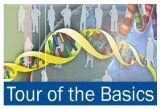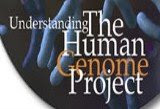The prospects for using genes as a therapy may be improving.
FOR around 40 years scientists have understood how genes work. They have known the structure of genes, how they replicate, how they are controlled and expressed and, crucially, how to manipulate them. Such knowledge has been the basis of a genetic revolution that offers the power to rewrite the material from which all living organisms are made.
There has been great progress in realising some of this promise, in the form of genetically modified organisms. But ways to correct the genetic mistakes that cause many human diseases have been slower to arrive. Gene therapy has been plagued with problems—naivety, false promises, over-optimism and fatalities. Although thousands of patients have received gene therapy for a variety of conditions, only a few have shown any clinical benefit.
Could that be about to change? There was news this week (Last week of May 2008) of a successful attempt to correct a faulty gene that leads to blindness. An international team of scientists, led by a group at the University of Pennsylvania, used a genetically engineered virus to introduce the correct version of a gene called RPE65 into six people suffering from a retinal disease known as Leber's congenital amaurosis. In four patients vision improved. Earlier work with the same technique on dogs suffering from a naturally occurring form of blindness has also been successful.
Katherine High, of the Howard Hughes Medical Institute in Maryland, and one of the directors of the study, reported in The New England Journal of Medicine, reckons the treatment could be used more widely. It offers hope for correcting any of the ten genetic defects that can cause Leber's, as well as some forms of retinitis pigmentosa, a group of genetic eye conditions.
More importantly, though, it adds to the rather small number of human successes with gene therapy. The first human gene-therapy trial was in 1990, on a rare and severe immunodeficiency disease known as SCID. Although questions remain about whether the first examples were as successful as claimed, the treatment has since been used successfully on over two dozen patients around the world.
The clinical approach work on gene therapy for other conditions is proceeding. For diseases such as cystic fibrosis or muscular dystrophy, which involve one or a few inherited genetic changes, clinical trials are attempting to introduce the correct versions of faulty genes into patients. For acquired diseases, such as cancer, gene-therapy trials are introducing genes that are intended to kill cancerous cells. Len Seymour, a researcher at Oxford University, likens this approach to using DNA as a drug.
In the early days, says Dr Seymour, people wrongly thought that it would be easy to introduce genetic material into diseased cells. He likens attempts by researchers to introduce genes to “throwing a carburettor on to the passenger seat of a car and expecting the car to go”.
The most notable successes, so far, have been with diseases where it is relatively easy to introduce genes. In SCID, for example, bone-marrow precursor cells can be removed, treated and then injected back into place. In the case of Leber's congenital amaurosis, viruses carrying the correct gene can be injected directly into the retina where they will infect retinal cells. Direct injection is also being used in gene-therapy trials on patients with Parkinson's and on those with muscular dystrophy.
Many of gene therapy's other problems have been with the vector that carries the gene, usually a virus. Sometimes these viruses have provoked strong immune reactions—which is what caused the death of Jesse Gelsinger, an 18-year-old American who had a damaged gene that prevented his liver from making an enzyme to break down ammonia. In 1999 he was the first person to be publicly identified as having died in a clinical trial for gene therapy.
Viruses can also cause genetic mutations when they integrate themselves into human DNA. Of the 27 people treated for SCID worldwide, four have developed leukaemia and one has died, says Dr Seymour, though this needs to be balanced against the fact that most children with SCID are completely lacking a normal immune system and die in early childhood.
Hence, research is focused on improving the viral vectors. One way of doing this is to create viruses that lose their ability to activate local genes when they are integrated into their host's genome. Another route, used in the recent Pennsylvania trial, is to use viruses that integrate themselves only into the cell, rather than the cell's DNA. And at Oxford Dr Seymour is working on “stealth viruses”, which are coated in a polymer that hides the virus from the immune system. This allows the modified virus to circulate for longer in a patient's blood stream and thus have a better chance of getting to tumours disseminated around the body. Across the world a number of groups are trying to develop synthetic polymers to deliver genes, entirely removing the need to use viruses.
Most work in gene therapy is centred on cancer. One approach, used by Shenzhen SiBiono GeneTech, a Chinese company, is to replace broken tumour-suppressor genes with the correct version. In 2003 the company's treatment for head and neck cancer, which accounts for about 10% of the 2.5m new cancer patients in China every year, gained the first commercial approval of a gene-therapy treatment. Yet many outside China have been dismissive of the quality of the data used to support this therapy, although Dr Seymour says that when used with chemotherapy in some situations, it can be good.
Another promising strategy, one that is on the fringes of what strictly you would call gene therapy, is “virotherapy”. This uses viruses selectively to attack only cancerous cells. There are about a dozen trials in this area. In 2006 researchers from the Hebrew University in Israel isolated a variant of the virus that causes Newcastle disease, a highly contagious disease in birds that can kill. This variant was able to target selectively cancer cells in humans. Trials on a form of aggressive primary brain tumour have shown one complete regression out of 14 treated patients.
Despite the slow progress, Dr High says she is optimistic about the future of gene therapy. She argues that treatments only really got going 15 years ago (when the SCID trials began). This, she adds, should be put into context: the development of bone-marrow transplantation or monoclonal-antibody treatments both took several decades. Drugs that are “biologics”, such as vaccines, monoclonal antibodies and gene therapy, are derived from biological processes and are inherently more complicated than the chemicals that have traditionally been the mainstay of the pharmacological arsenal.
Gene therapy could be the most complex biologic of all, reckons Dr High. The work carried out so far gives scientists a reasonably complete list of things that can go wrong. Dr High warns that researchers are still at the bottom of a tall ladder, though she expects quicker progress in the future. “We have our foot on the rung, and it's not giving way.”
-----------------------------------------------------------------------------------
Article provided by The Economist (1st May 2008)

.jpg)
.jpg)
.jpg)

.jpg)
.jpg)
No comments:
Post a Comment